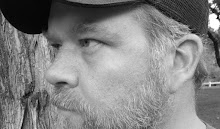
Prop table 101 and a little prop etiquette
Props are usually organized on a “prop table”. Any good sized sturdy table that can be set in a convenient location will serve this purpose. Each prop should have its own space on the table boxed off with masking tape and labeled (see image). It is usually advisable to have someone specifically in charge of making sure that each prop finds it place at the beginning of each performance and is put back afterward. That person is traditionally called the prop master or mistress.
In addition to making a specific space for each prop so that a quick visual inventory can be taken, you might want to consider dividing your table into acts and scenes with props categorized by when they are used in chronological order.
The props table is also a good place to keep a few things handy such as: scissors, safety pins, hot glue, staple gun and staples, superglue, masking, duct and gaffers tape. You may never use some of these items but every one of them is something I have needed at least once in a backstage emergency!
Make sure you remind your actor’s of the cardinal rule of prop usage, “If it isn’t your prop, don’t touch it!” There is nothing quite like coming out of a quick change booth to find that someone has moved your props and they are nowhere to be found. One other simple rule: you break it onstage doing what you were supposed to, company buys another one. You break it chasing someone down the hall with it, you buy another one. You must make sure that everyone knows and respects the time and effort that goes into finding, making and caring for props.
Props are usually organized on a “prop table”. Any good sized sturdy table that can be set in a convenient location will serve this purpose. Each prop should have its own space on the table boxed off with masking tape and labeled (see image). It is usually advisable to have someone specifically in charge of making sure that each prop finds it place at the beginning of each performance and is put back afterward. That person is traditionally called the prop master or mistress.
In addition to making a specific space for each prop so that a quick visual inventory can be taken, you might want to consider dividing your table into acts and scenes with props categorized by when they are used in chronological order.
The props table is also a good place to keep a few things handy such as: scissors, safety pins, hot glue, staple gun and staples, superglue, masking, duct and gaffers tape. You may never use some of these items but every one of them is something I have needed at least once in a backstage emergency!
Make sure you remind your actor’s of the cardinal rule of prop usage, “If it isn’t your prop, don’t touch it!” There is nothing quite like coming out of a quick change booth to find that someone has moved your props and they are nowhere to be found. One other simple rule: you break it onstage doing what you were supposed to, company buys another one. You break it chasing someone down the hall with it, you buy another one. You must make sure that everyone knows and respects the time and effort that goes into finding, making and caring for props.



No comments:
Post a Comment